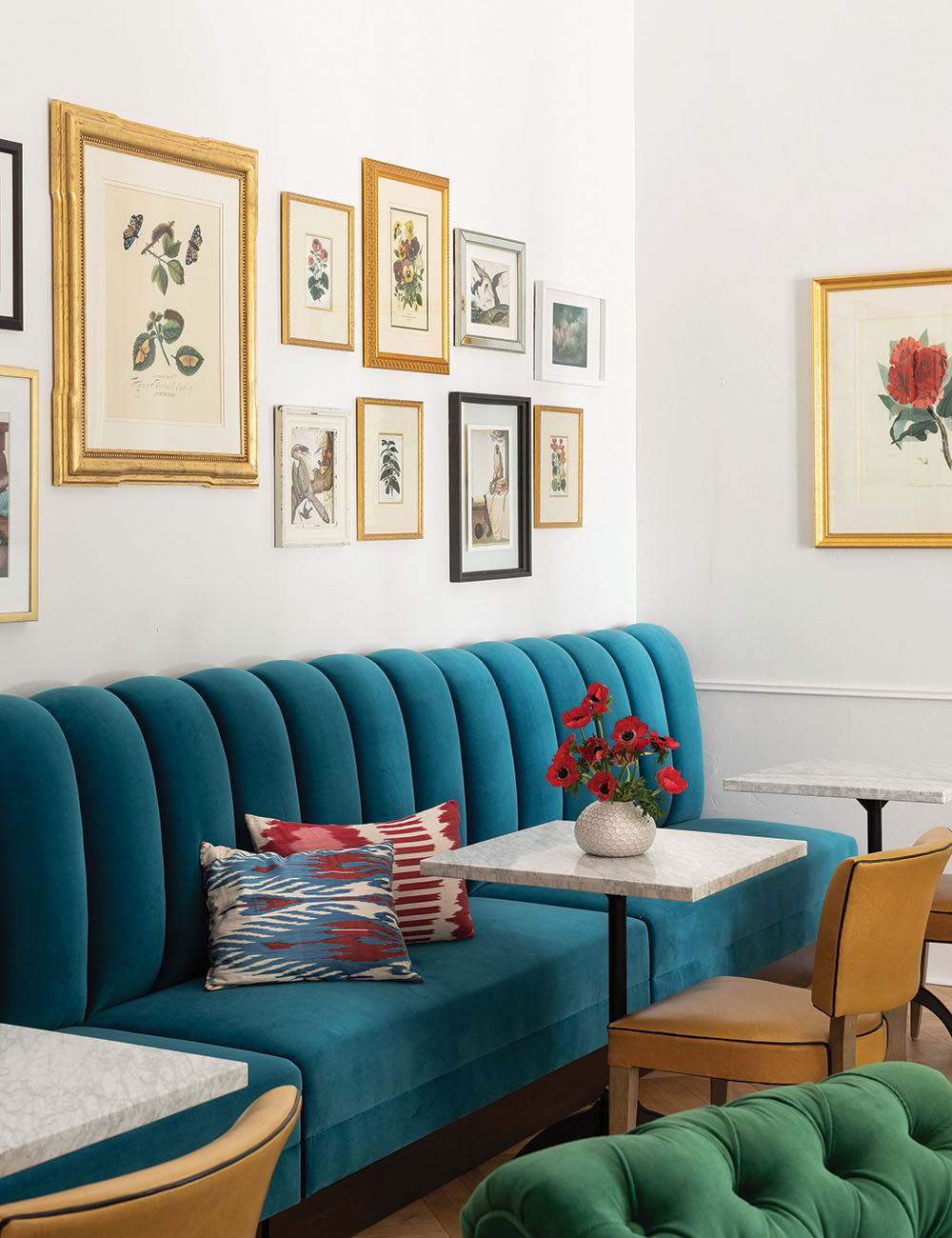
Courtesy of Jess Isaac

“I wanted to subvert the expectation of what an office space should look like,” explains Paul Lee, the CEO of production company wiip, which has produced a slew of acclaimed fare including Mare of Easttown, Dickinson and The Summer I Turned Pretty since its founding in 2018. “Plus, if I’m being honest, I’d spent far too long in the cold corridors of corporate life.”
Lee, who previously helmed ABC Entertainment Group, launched wiip alongside Matteo Perale, CAA’s former head of strategy and corporate development. Backed by the agency, the boutique production company — whose name is an acronym of “word,” “idea,” “imagination” and “production” — had originally been based at CAA’s Century City offices.
But Lee decided to move wiip and its 32 employees to a much different space in the heart of Hollywood in 2020, just before the onset of COVID-19. (The next year, CAA sold a majority interest in the company to South Korea’s JTBC Studios to resolve a standoff with the WGA.)
“I wanted the team to know that this is a very different type of studio,” says Lee, “and that starts with creating an inclusive and warm workspace.”
To bring that vision to life, Lee turned to Jaqui Seerman (who’s designed offices for Michael De Luca, Lionsgate Studios and Makeready Studios) to transform a long-neglected two-story space in a Spanish Colonial Revival building on Sunset Boulevard into a vibrant and welcoming creative environment.

Courtesy of Jess Isaac
“The building had gone through a lot of iterations and was pretty run-down,” says Seerman. The structure was developed back in 1927 by silent film cowboy Fred Thomson as a retail and studio space. Known since as the Fred Thomson building, it was later owned by ventriloquist and TV personality Edgar Bergen, who created a radio studio inside from which he broadcast The Charlie McCarthy Show for CBS. And the building and its large courtyard were home for 29 years to the rock star-frequented pub The Cat & Fiddle (the restaurant space is now occupied by Superba Food + Bread). The city of L.A. declared the building a historic cultural monument in 2019.
Seerman recalls that Lee’s original idea for wiip’s new offices came from the hospitality world. “His inspiration image was a lounge [at] one of London’s Firmdale Hotels — so a lot of ikat [fabric], a lot of pattern and a high use of contemporary colors,” says Seerman, whose design pedigree includes stints working for such L.A.-based designers as Waldo Fernandez, Madeline Stuart and Martyn Lawrence Bullard. “As a result, my style can transition from Fernandez’s California modern to Stuart’s more traditional to Bullard’s eclectic and wild,” she says of her mentors, “and I’m comfortable working in all those ranges.”

Courtesy of Jess Isaac
Seerman sees her role as collaborative. “My goal is to walk the path with my client, while pushing them out of their comfort range, rather than presenting them with a final design. That way they’re involved and invested.” At wiip — where upcoming projects include Netflix’s Bodkin, the first scripted drama series from Barack and Michelle Obama’s Higher Ground Productions, and Adam McKay’s climate-change anthology series The Uninhabitable Earth for HBO Max — she and Lee veered away from a layout dominated by individual offices, creating comfortable communal spaces that offer richly upholstered seating in velvet and leather and small tables for breakaway meetings.

Courtesy of Jess Isaac
In the main conference room, the custom table spans 21 feet. “It’s the largest table I’ve ever made. It goes on forever,” exclaims Seerman. “But it was important to him that it could accommodate [people] without the awkwardness of pulling up additional chairs. That makes people feel unwelcome.”
Instead of a formal reception area, visitors arrive at a bright upstairs landing (dominated by a pair of arched windows), which offers a plush wingback chair and a long settee. “We sourced a lot of pieces from estate sales to make it feel more collected and personal,” says Seerman.
“I know that, post-pandemic,” she continues, “a lot of people don’t want to go back to their offices because they’re cold and isolating. But Paul told me that everyone couldn’t wait to come back. They’re very conducive to lifestyle and balance and flexibility and people bringing their pets, and they get to do it in this magnificent environment.”

Courtesy of Jess Isaac

This story first appeared in the July 27 issue of The Hollywood Reporter magazine. Click here to subscribe.